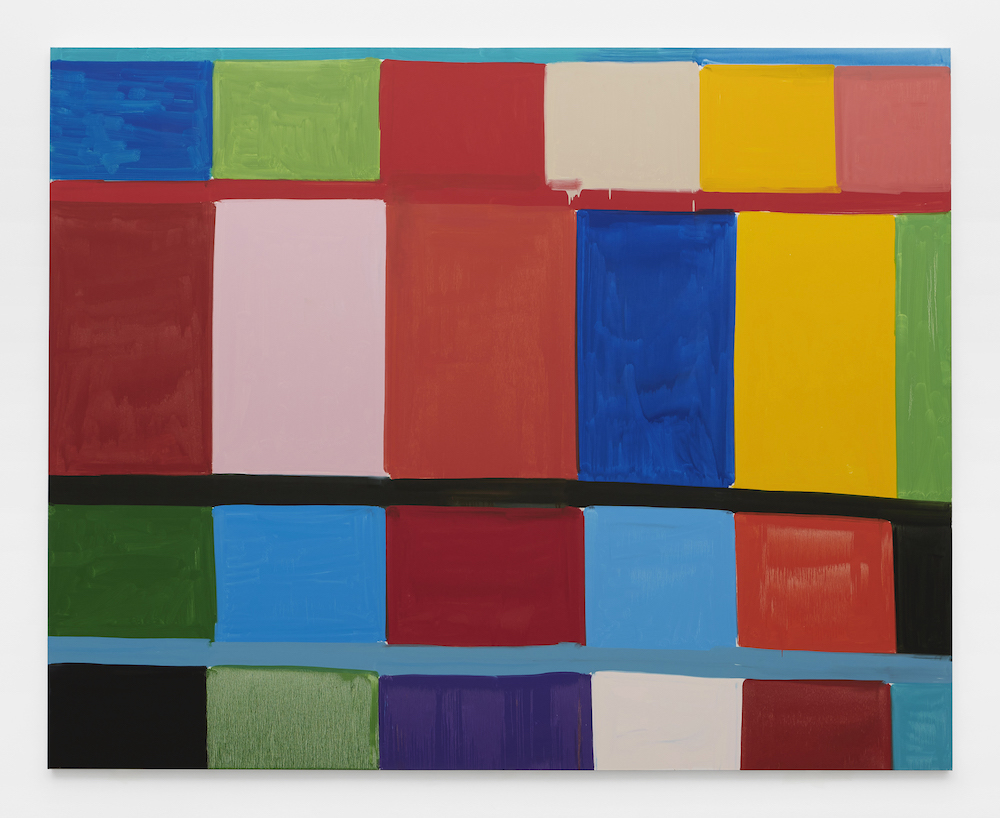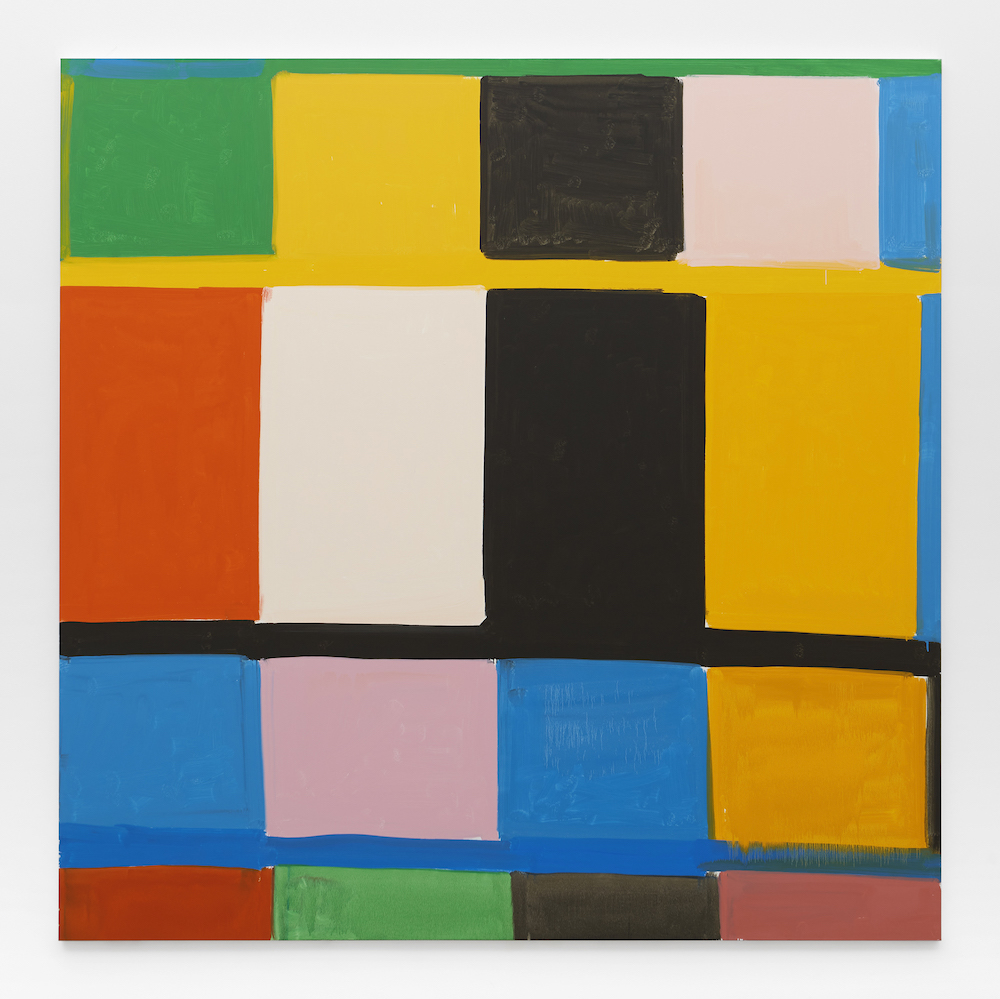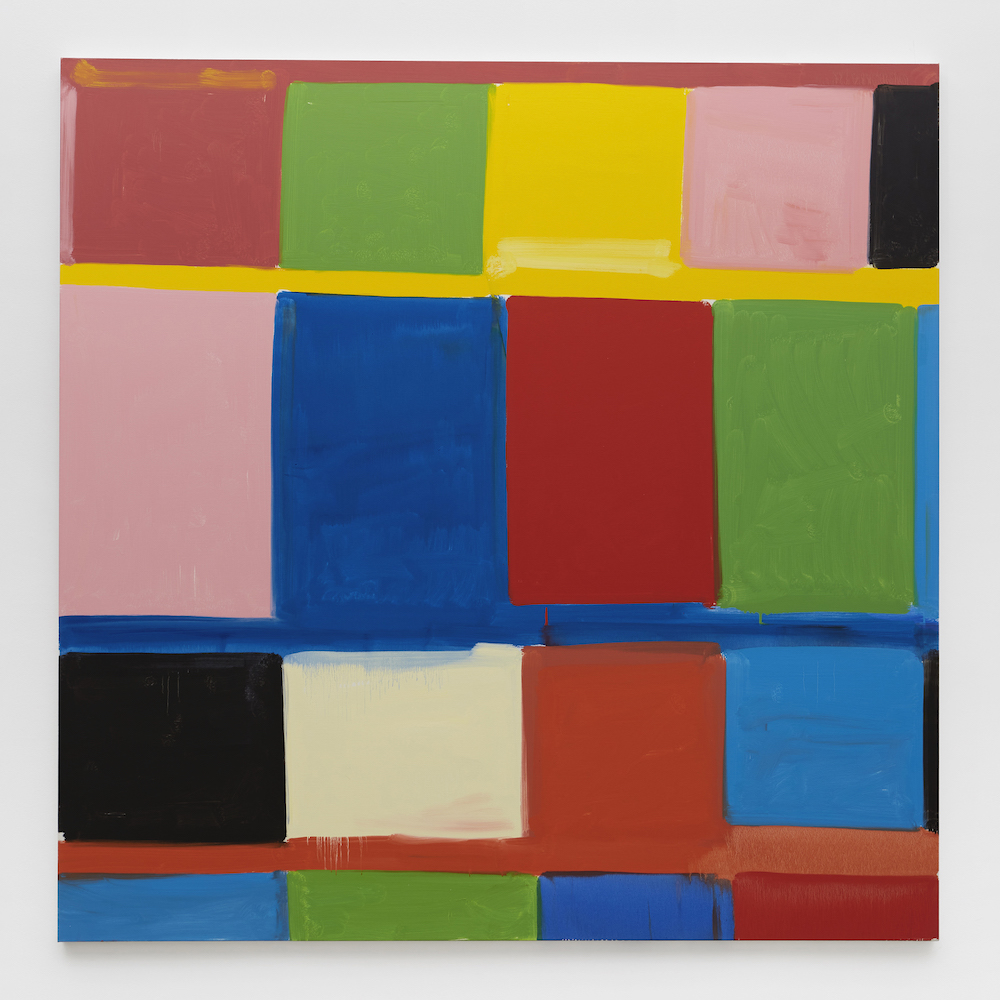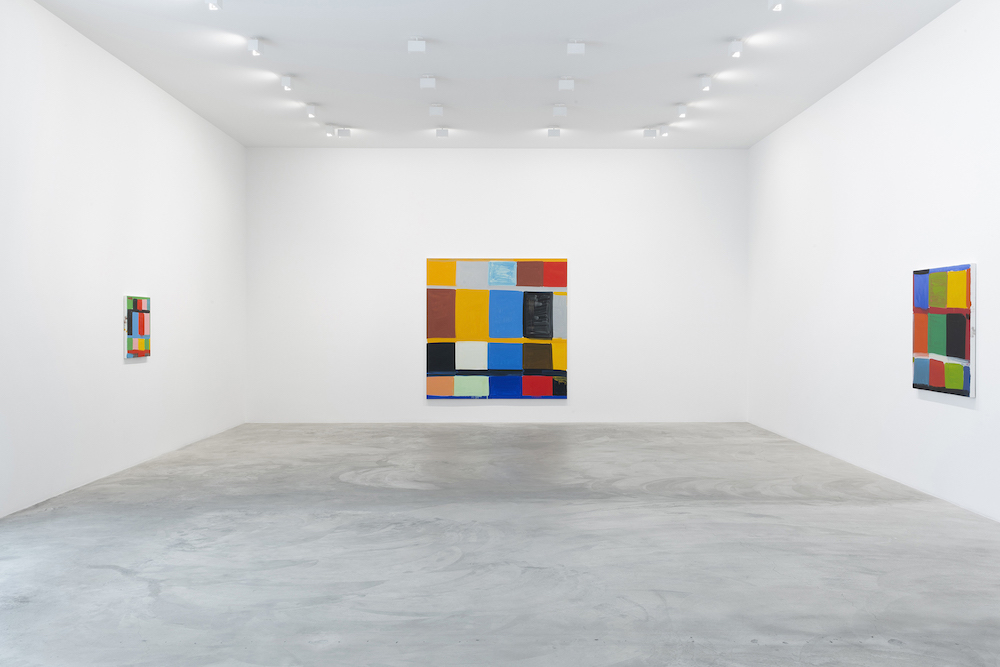Your cart is currently empty!
GALLERY ROUNDS: Stanley Whitney Matthew Marks Gallery

Stanley Whitney’s first major solo exhibition in Los Angeles, “How Black is That Blue,” reads like poetry. Utilizing his consistent style of painting “top to bottom,” Whitney’s colorful square works reveal several paintings within each piece. Favoring the asymmetrical, polyrhythmic shapes that he cites in Gee’s Bend quilting, Whitney’s stacked colored rectangles are not neatly packaged. Instead they bleed, drip and scrape, squishing their neighbors and shrinking in size. It is in this sense that his 11 new paintings on view read like poetry, their lines and gestures functioning as punctuation and line breaks, each scrape or nick of exposed white canvas abundant in unspoken meaning.

While the paintings are restrained and visibly specific (they feel decidedly finished, in a way I’m not sure I am used to seeing), there is a meditative quality to them. In making these works, Whitney remarks, “When you face the canvas and you’re painting, you have to bring everything to it. […] What comes out of my growing up? What comes out of my Blackness, my maleness, just being a human being? When you’re facing a blank canvas, you need all of these things to make it something.” The result is none of these things, and yet all of them at once accumulating to posit something new, something that looks like this exhibition, where each painting feels like a meditation on being and being in the exhibition is overwhelmingly meditative.

Entering the gallery is breathtaking. Each room presents one singular painting — large and mighty in stature — on its own wall. Given ample room these paintings seem to breathe, conversing with one another, each composed of the same parts and yet strikingly different. Whitney is a master of color, evident in his bold usage. Though the paintings are made up of blues, pinks, greens, reds and everything in between, I can be sure to tell you which the “green painting” (Twenty twenty), “yellow painting” (Sun Moon) or “pink painting” (Memory Garden) is.
Though they are boldly multi-hued, as well as significantly sized, they do not appear “colorful” or oppressive but rather muted and pensive. This speaks both to Whitney’s expertise of color and also his understanding of harmony and proportion.

This genre-spanning exhibition takes its influence from many forms — Gee’s Bend quilters as previously mentioned, architecture (look closely and the paintings will start to look like buildings, smartly constructed which, when placed in the context of this exhibition exist as landscapes or cityscapes), and jazz music. The off-beat, whip-smart irregularities of jazz are mimicked in Whitney’s obscure rectangles which have most in common with Beat poets and stream of consciousness method of writing. This exhibition, which can be best described as transcendent, reconciles form and meaning and, alike poetry, surpasses language and the words that construct them.
Stanley Whitney: How Black is That Blue
February 13 – May 8 2021
Images ©Stanley Whitney, Courtesy Matthew Marks Gallery